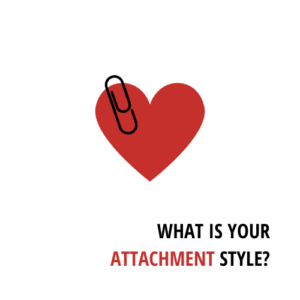Attachment fears: I am here for you
Our attachment is the foundation of our psychology; it is our belief that we are worthy of love and value, it is our ability to be brave to love others, and our ability to trust other’s love for us. While roughly half the population are travelling okay and are securely attached. The other whopping half of the population have attachment difficulties. Imagine if half the population were diabetic – we’d be jumping on this public health issue. But somehow having anxious attachment (the very thing we need to be happy) just tends to go under the radar. So, a quick reminder, Insecure Attachment is (roughly speaking) broken down into two subgroups – Anxious Insecure and Avoidance Insecure.

Attachment styles explained
Secure attachment
The securely attached person is like a puppy dog, they have a lightness in their presence and the ability to be open with loved ones, and open to new relationships. It is relatively easy for them to get close to others, they feel comfortable depending on them and having others depend on them. They don’t fear people getting too close to them, and they don’t invest energy worrying about being abandoned.
They have a light cockiness in their outlook (‘You’re lucky to be with me’), which says they value and love themselves in a healthy way. They understand that there are no guarantees in life, and they can be let down. They understand that it’s possible that they will be abandoned and hurt, but they make an educated gamble that this is not likely to happen – and if it does happen, they feel it is the other person’s loss. And while they will feel hurt, they also feel confident that they will ultimately recover and bungee back into life. This bungee back is the resilience that enables us to recover in life.
Anxious insecure attachment
Anxious insecure people cling; they demand frequent reassurance that they are loved, and evidence that they are a priority. They fear their partner will want to leave them. They feel that others are reluctant to get as close to them as they would like, and they may want to merge completely with their partner. This, of course, can scare people away.
Anxious insecure people seek information that proves their partner’s (or friend’s) love, believing that with enough reassurance they will feel secure. Sadly, this cannot happen so easily, given that without the template of self-love, we are not able to absorb other people’s love. We cannot really believe their messages of love, because we don’t believe it is possible.
The anxious insecure person can also set up invisible hoops for their partner to jump through: ‘If she loves me she will do this, she will do that.’ These hoops are inevitable disasters because of course we cannot impose certain behaviours on another person, and nor should we. They are not performing puppets who behave the way we dictate. They do not need to conform to our prescribed expectations. The anxious insecure person inevitably feels disappointed and greatly hurt when their loved one does not jump through their hoops and prove their love. The good news is that over time, consistent messages and experiences of love can wear the insecure person’s defences down and they can gradually learn to feel more secure in receiving love from others.
Our loved one cannot fill our bucket with reassurance
of their love if we have a hole in our bucket.
We must first repair this hole through self-love.
Avoidant insecure attachment
The avoidant insecure person is a bit of a tricky case. Their logic is, I’ve been hurt before, so why would I put myself out there again to be hurt? Do you think I’m an idiot? The avoidant insecure attachment person defends and protects themselves by avoiding closeness. The avoidant insecure person is working hard to hide their anxiety and insecurity.
This is understandable logic in the short term. But we are human, and we need to be loved. So, in the middle to long term, the avoidant insecure person is in a difficult spot: they need people, but they are avoiding letting them in.
The avoidant person hides their vulnerability; they present as confident, perhaps aloof. ‘I’m fine.’ But they are like a duck on water: above, they are gliding along looking effortless, even confident, but underneath their legs are paddling fast as they try to stay afloat. They fear being hurt again. They fear being vulnerable because if they are hurt again, they don’t know if they will recover. They are uncomfortable being close to and trusting others and allowing themselves to depend on others. Their partners often want them to be more intimate and open up to them more. While they look confident, just like the anxious insecure person, they are actually doubting whether they are lovable and valuable to others. When the avoidant person does explore a new relationship, they just put their toe in, and may take a long time to ease into trusting their partner. They can eventually warm up and let a loved one in, or they can remain reserved, keeping a part of themselves ‘safe’.
Anxious insecure people are not the same as people who are socialised to be reserved. This reserved group are travelling along in what is normal for them; they engage in light, impersonal conversation and have a stoic approach to problems. Their behaviour is not necessarily based on fear; this is just their cultural norm.
Wish you well, take care.



Subscribe To Our Newsletter
Join our mailing list to receive Psych wisdom, advice and encouragement once a month.
"The Skills we need are not just common sense, we need to learn them from somewhere"
You have Successfully Subscribed!